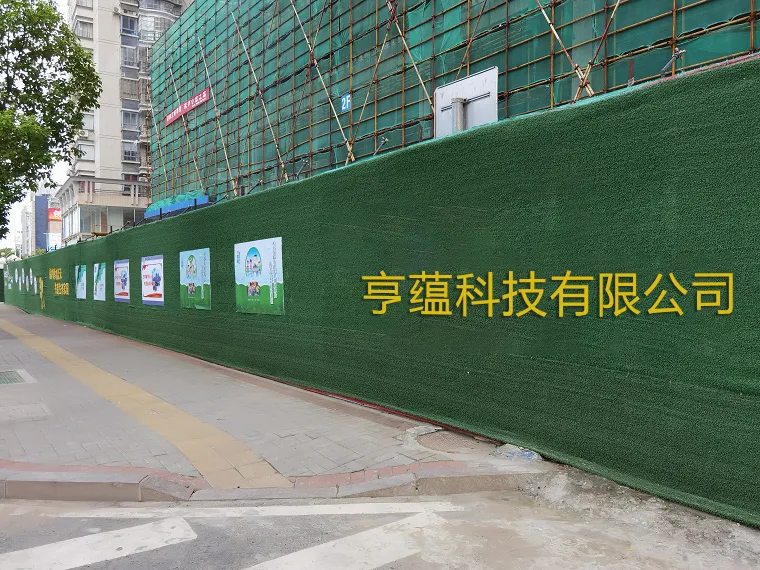
- Afrikaans
- Arabic
- Belarusian
- Bengali
- Czech
- Danish
- Dutch
- English
- Esperanto
- Estonian
- Finnish
- French
- German
- Greek
- Hindi
- Hungarian
- Icelandic
- Indonesian
- irish
- Italian
- Japanese
- kazakh
- Rwandese
- Korean
- Kyrgyz
- Lao
- Latin
- Latvian
- Malay
- Mongolian
- Myanmar
- Norwegian
- Persian
- Polish
- Portuguese
- Romanian
- Russian
- Serbian
- Spanish
- Swedish
- Tagalog
- Tajik
- Thai
- Turkish
- Turkmen
- Ukrainian
- Urdu
- Uighur
- Uzbek
- Vietnamese
high quality artificial turf
Dec . 20, 2024 19:27 Back to list
High-Quality Artificial Turf Revolutionizing Landscaping and Sports
Artificial turf has undergone significant advancements over the past few decades, transitioning from a basic synthetic surface to a highly sophisticated alternative to natural grass. This evolution has been driven by a growing demand for high-quality artificial turf that meets the needs of both recreational spaces and professional sports facilities. In this article, we will explore the benefits, applications, and future of high-quality artificial turf.
The Rise of Artificial Turf
The first generation of artificial turf was introduced in the 1960s, primarily aimed at solving the issues of maintaining natural grass in high-traffic areas, such as sports fields. Initially, it was made of nylon, which was durable but lacked the realistic look and feel of natural grass. However, with technological advancements, newer versions of turf materials, primarily polyethylene and polypropylene, were developed to enhance the quality and appeal of artificial grass.
Today, high-quality artificial turf replicates the look and feel of natural grass so well that it is often indistinguishable from the real thing. This realism is achieved through improved fiber technology that mimics the texture, color, and resilience of genuine grass. Manufacturers utilize advanced techniques such as tufting, coating, and innovative backing systems to enhance durability and performance.
Benefits of High-Quality Artificial Turf
1. Low Maintenance One of the greatest advantages of artificial turf is its low maintenance cost. Unlike natural grass, which requires regular mowing, watering, weeding, and fertilization, synthetic turf stays green and lush without these labor-intensive activities. This makes it an ideal solution for facilities that require minimal upkeep while still looking aesthetically pleasing.
2. Water Conservation As climate change intensifies and water scarcity becomes a critical issue in many regions, artificial turf presents a sustainable alternative. It significantly reduces water consumption, making it an attractive option for landscaping in drought-stricken areas.
3. Durability and Longevity High-quality artificial turf is designed to withstand heavy foot traffic and varying weather conditions. It does not fade in sunlight and can resist extreme temperatures, ensuring that it maintains its vibrant appearance for years. This durability is especially beneficial for sports fields, where consistent playability is essential.
high quality artificial turf

4. Safety Leading manufacturers focus on creating artificial turf that meets safety standards. Many products are designed with shock-absorbent properties that minimize the risk of injuries, making them suitable for children’s play areas and sports facilities. Additionally, high-quality turf can be free of harmful chemicals, further enhancing its safety profile.
5. Versatility of Applications High-quality artificial turf is not only limited to sports fields but has also found its way into residential landscaping, commercial properties, schools, and parks. It can be installed in a variety of settings, including backyards, rooftops, and corporate campuses, allowing property owners to have green space without the hassle of maintenance.
Applications in Sports
High-quality artificial turf has become a staple in various sports, including soccer, football, baseball, and golf. Its consistent playing surface ensures that athletes can perform at their best, regardless of weather conditions. Many professional sports teams and colleges have invested in artificial turf fields to provide optimal playing conditions and reduce injuries caused by uneven natural grass.
Furthermore, advancements in turf technology have allowed for the development of multi-sport fields, which can accommodate different types of games. These versatile installations maximize the use of space and provide communities with various athletic opportunities.
The Future of Artificial Turf
As technology continues to improve, the future of high-quality artificial turf looks promising. Innovations such as infill materials designed to enhance performance, eco-friendly manufacturing processes, and smart turf systems equipped with sensors for monitoring conditions are on the horizon. These advancements will not only improve the quality and performance of artificial turf but also further its acceptance as a sustainable landscaping solution.
In conclusion, high-quality artificial turf represents a significant leap forward in the landscaping and sports industries. Its low maintenance, durability, and versatility make it an appealing alternative to natural grass, while its continued evolution promises even greater benefits in the future. As we strive for more sustainable living practices, artificial turf stands out as a smarter, greener choice for both recreational and professional applications.
-
The Benefits of Artificial Turf for Indoors
NewsJul.15,2025
-
How Artificial Grass Suppliers Ensure Quality Products
NewsJul.15,2025
-
Artificial Grass and Pets: A Space for Relaxation
NewsJul.08,2025
-
Balcony & Outdoor Decoration with Artificial Grass
NewsJul.08,2025
-
Best Indoor Artificial Grass for Home
NewsJul.07,2025
-
Best Pet Turf for Dogs: Safe & Durable Artificial Grass Options
NewsJul.07,2025
Products categories









